The smart home trends experts say will be taking over for 2024
What's predicted to be the latest in must-have home tech

Chris Haslam
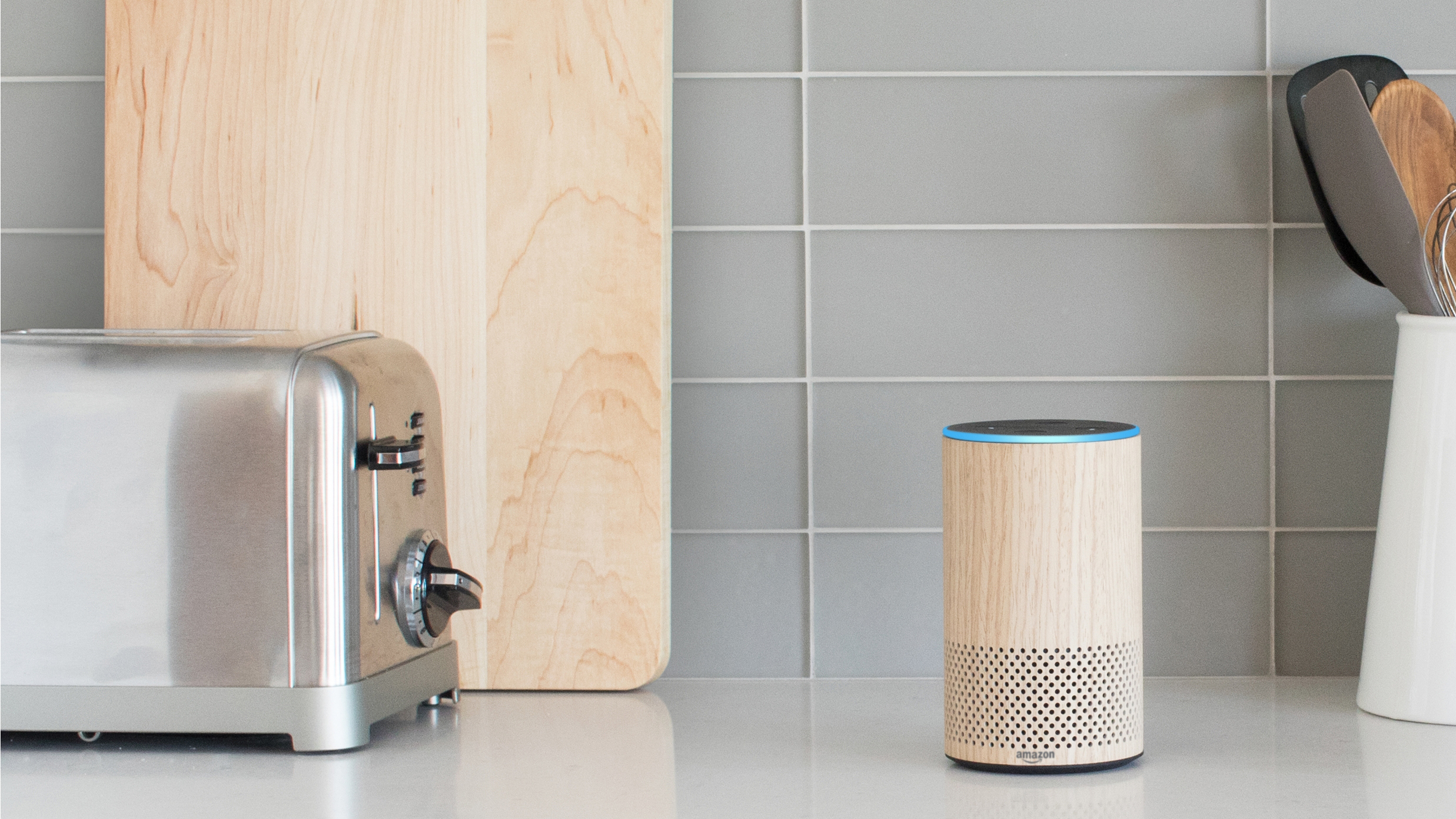
Over the past few years the notions of smart homes have gone from visions of The Jetsons to a part of everyday life. So much so, in fact, that smart home trends have become a key part of planning how our spaces will look and work for us.
Whether you just like to dip your toe in with smart speakers and video doorbells or you've created a full-blown smart ecosystem (more on that to come for the uninitiated!), smart home trends can help you work out where you might want to make changes in your space and how these can make you life easier.
'The smart home market is only going to keep growing as technology continues to advance and evolve, offering more and more convenience to the everyday homeowner,' notes Ronke Ugbaja, leader of product management, GROHE UK.
'As the sector expands, the cost of smart technology products will likely reduce, enabling mass consumption. As homeowners, we want to emulate our favourite designs in our own home with products that help to create a haven away from the hustle and bustle of the rest of the house and provide a personal space for relaxation. Smart technology offers this level of control and convenience for just a small investment.'
We've spoken to the experts to find out just what these technologies are and what they can do for us...
Smart home trends 2024
'Smart home technologies address several key issues, including convenience, energy efficiency, and security,' notes Tom Edmunds, general manager at Wunda Group. 'The automation of routine tasks enhances daily life by simplifying processes and allowing for remote control.'
Let's learn about these in more detail, and what other smart home trends the experts are predicting to lead the pack.
Sign up to our newsletter for style inspiration, real homes, project and garden advice and shopping know-how
1. Smart lighting
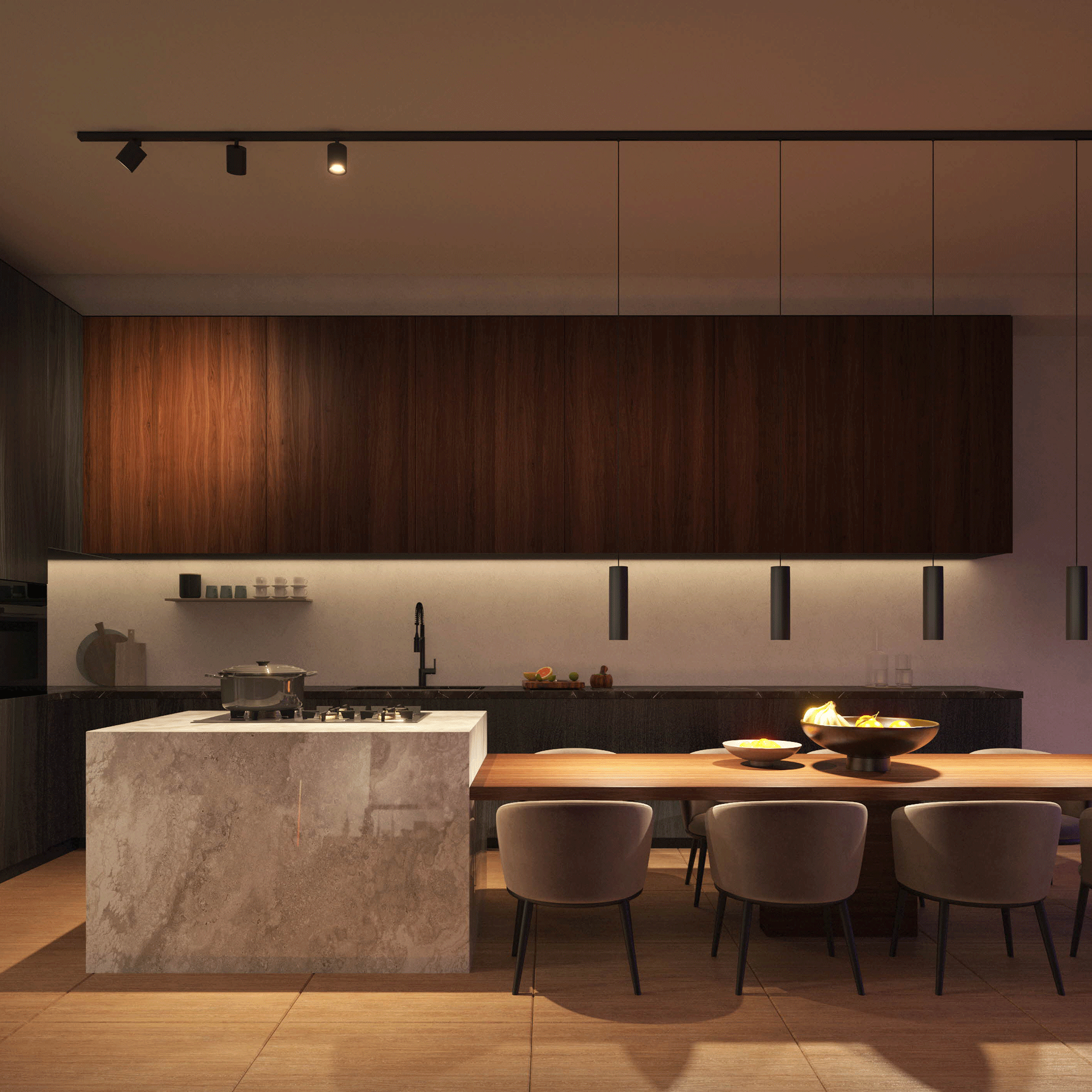
'Smart lighting is gaining traction year on year and 2024 will be no exception,' advises Piero De Marchis, director of Detail Lighting.
In fact, one of the biggest lighting trends for the year ahead is about creating spaces that provide the right mood and brightness exactly when you need it. 'As people increasingly use their spaces for multiple purposes, lighting that can change the mood of the room is going to become more popular,' agrees Matthew Currington, Technical Director, The Lighting Superstore. 'Smart lightbulbs are incredibly handy for providing both bright, functional lighting and relaxing, moody lighting.
'Different colour tones can also play a role in how we feel,' continues Matthew. 'Green hues stimulate and energise us, making it the ideal tone to wake up to in the mornings. Timers can be used to switch off the light in the evenings or on in the mornings too, which is ideal for keeping a regular sleep routine.'
And don’t forget, if you choose a widely compatible smart bulb it can also integrate with other app-connected gadgets, dimming automatically before the movie starts, for instance, even adjusting brightness during the day depending on the position of the sun in the sky.
Security is a factor at play here, too. 'Smart lights can be on duty as your security Marshall, and mimic the actions of people being at home even when they’re not,' explains Giuliano Ghidini, consumer commercial leader at Signify.
2. Energy and heating
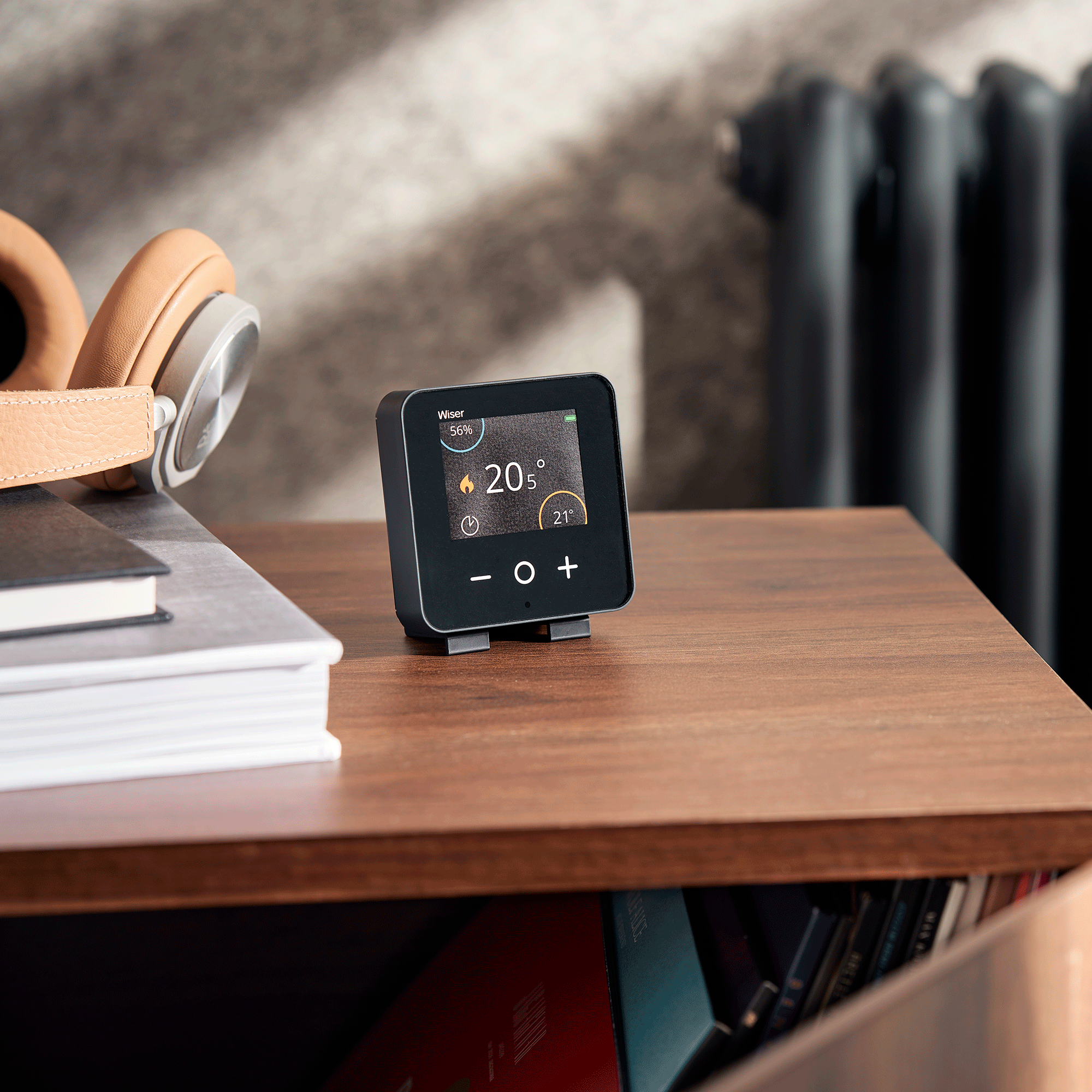
Soaring energy costs mean we’re all looking for ways to keep bills manageable, and while there are plenty of quick tips on how to save energy the latest smart thermostats in particular can also make a significant difference.
'Installing a smart thermostat means you can control your heating on the go and avoid wasting money on an empty home,' suggests Gav Murray, director at Hive. 'If you’re stuck at work or delayed on the way home, you can use your smartphone to stop the heating from coming on too early. It can save you up to £311 off your energy bills a year.'
And taking it a step further, by installing smart radiator valves such as Wiser in each room, you can accurately control the heating schedule room-by-room, and with clever eco and holiday modes, they estimate you can save up to £575 per year compared to a system without heating controls.
'Simply put, there has been a large boom in underfloor heating,' explains Tom from Wunda. 'This has been a long time coming but is now here thanks to our desire for energy efficient solutions at home driven by the green revolution. The seamless integration between underfloor heating and smart home technology is revolutionising energy saving.'
'These systems can communicate effortlessly, optimising your home's energy usage and making for a seamless user experience. Smart systems can learn how long it takes to heat your home so they can gradually bring it to the right temperature so that when you walk in you won’t be met with a cold chill and the temptation to turn your thermostat up higher than needed. Because systems like these offer the flexibility to control each room from your smartphone, you can precisely tailor everything to your individual and evolving needs,' concludes Tom.
3. Kitchen appliances
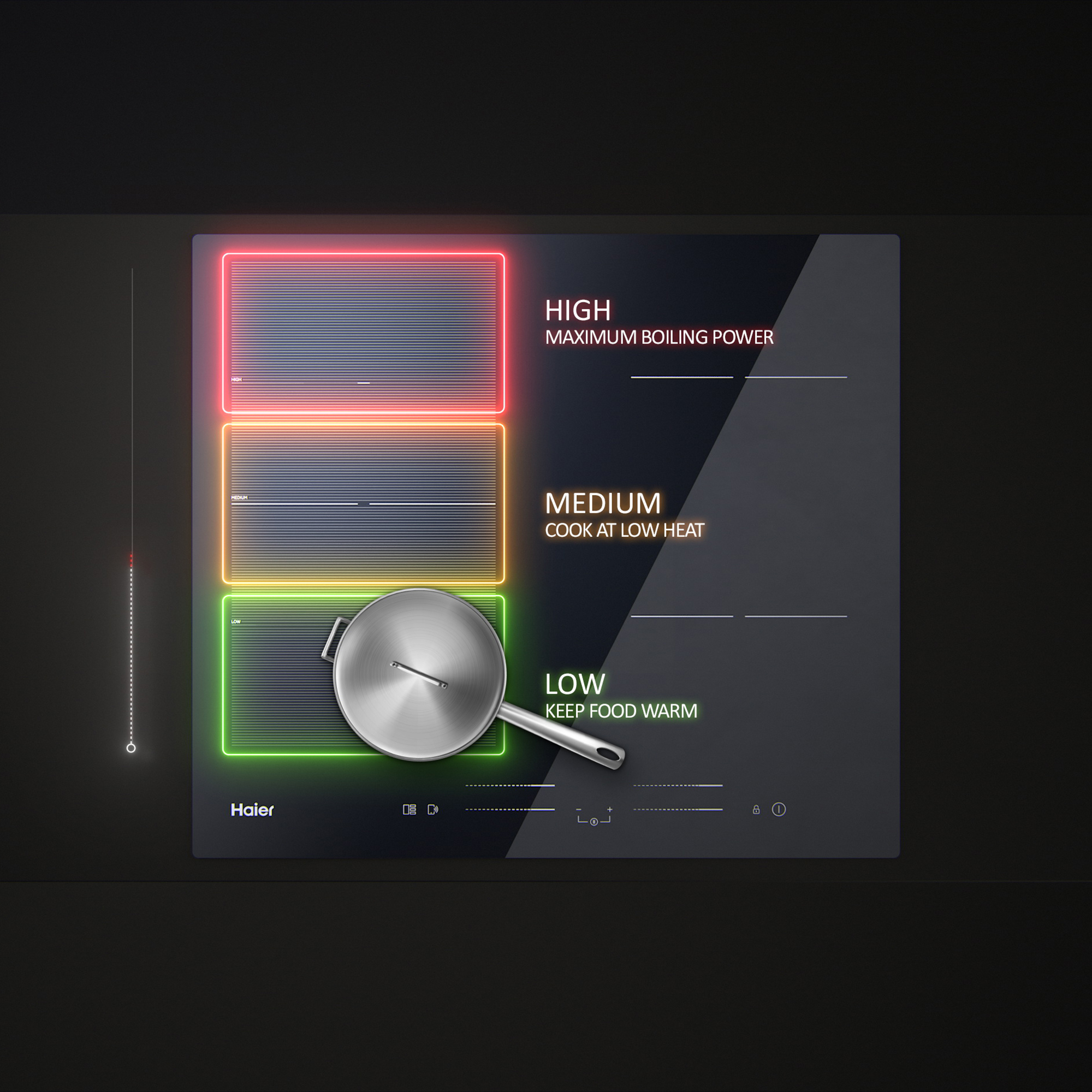
Although many us have brought clever appliances into our kitchens, like the best air fryers or intuitive bean-to-cup machines, for most of us hobs and cookers have stayed largely untouched over recent years, but that could be about to change.
One new innovation makes hobs a lot more clever than we've ever known them to be. 'The I-Move Series 6 ensures your dishes are cooked perfectly evenly every time by detecting the size of your pan, whether it's a small pot or large casserole dish, and adapting the cooking area accordingly for optimum heat distribution,' says Chris Grundy, senior cooking product manager for Haier UK & Ireland at Haier Europe.
'The Varycook function enables you to cook like a chef by simply moving your pot to switch to a different temperature zone, while Cook with Me is a personal assistant that allows you to select a dish from hundreds of recipes, before setting your hobs to the matching programme remotely from your phone.'
Ovens, too, have smart changes in their future, like the 2024 launch of the new ID Series coming with the very futuristic sounding Bionicook. 'It has an embedded camera that recognises the food and automatically chooses the ideal preparation parameters during the entire cycle, by accurately measuring the temperature,' explains Chris.
4. Charging stations
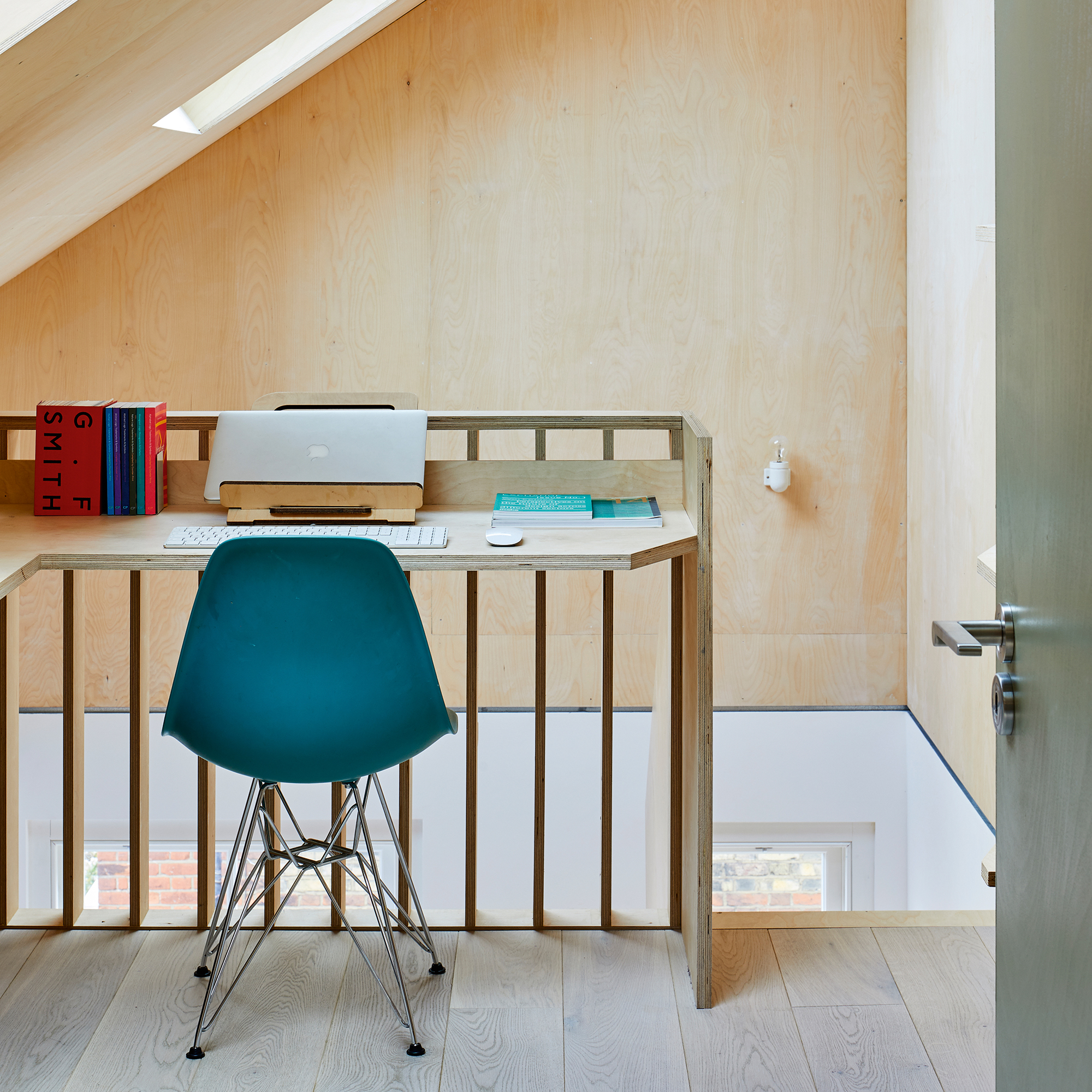
One thing that can often put people off about integrating technology into their homes is the prevalence of plugs and cables. Add to that the number of time someone asks you for a charger for their phone or air pods and this is why one of the most aesthetically pleasing smart home trends will be the rise of charging stations.
'Always on the hunt for convenient solutions that make life easier, consumers will be looking to build charging nooks – a dedicated area of the home to charge phones, headphones and power banks, rather than moving a plug from room to room,' advises Daniel Ufland, co-founder, Flitch.
5. AI
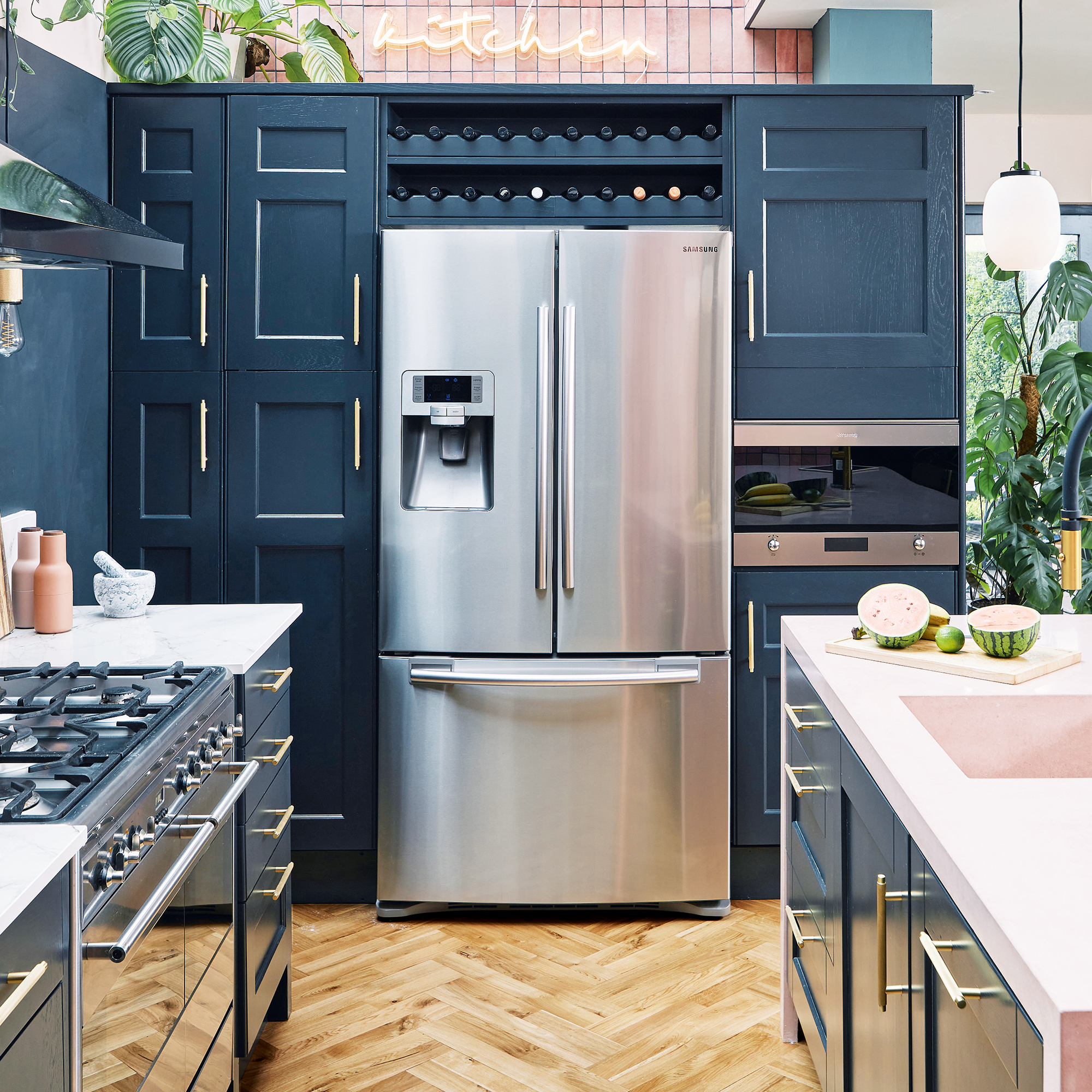
Over the past year we've heard an awful lot about AI. And whether or not you're interested in it or, let's be honest, fully understand it, it is a big part of the evolution of smart home.
‘The combination of ambient sensing and AI is expected to transform smart home experiences,' says Wenger Lin, senior overseas sales manager, Aqara. 'Various sensors offer valuable insights of your smart home, and AI can use such insight to make your home even smarter.'
'Smart home devices are likely to become more intelligent and adaptive,' explains Wenger. 'AI will be utilised to enhance automation, learning from user behaviours to optimise energy efficiency, security, and overall convenience. This includes anything from a robot vacuum cleaner to a smart fridge which tells you what shopping you need.'
After all, when you break it down, AI is how all those newer smart items work and they can make your lives simpler and easier. 'AI will help the next generation of smart devices to understand our habits and automatically adjust their operation based on our profile, daily routine and needs,' agrees Gary Newson, regional sales director for UK & Ireland, NETGEAR. 'It will increase safety and help achieve energy efficiency which is a major concern in every household today.
6. Robot helpers
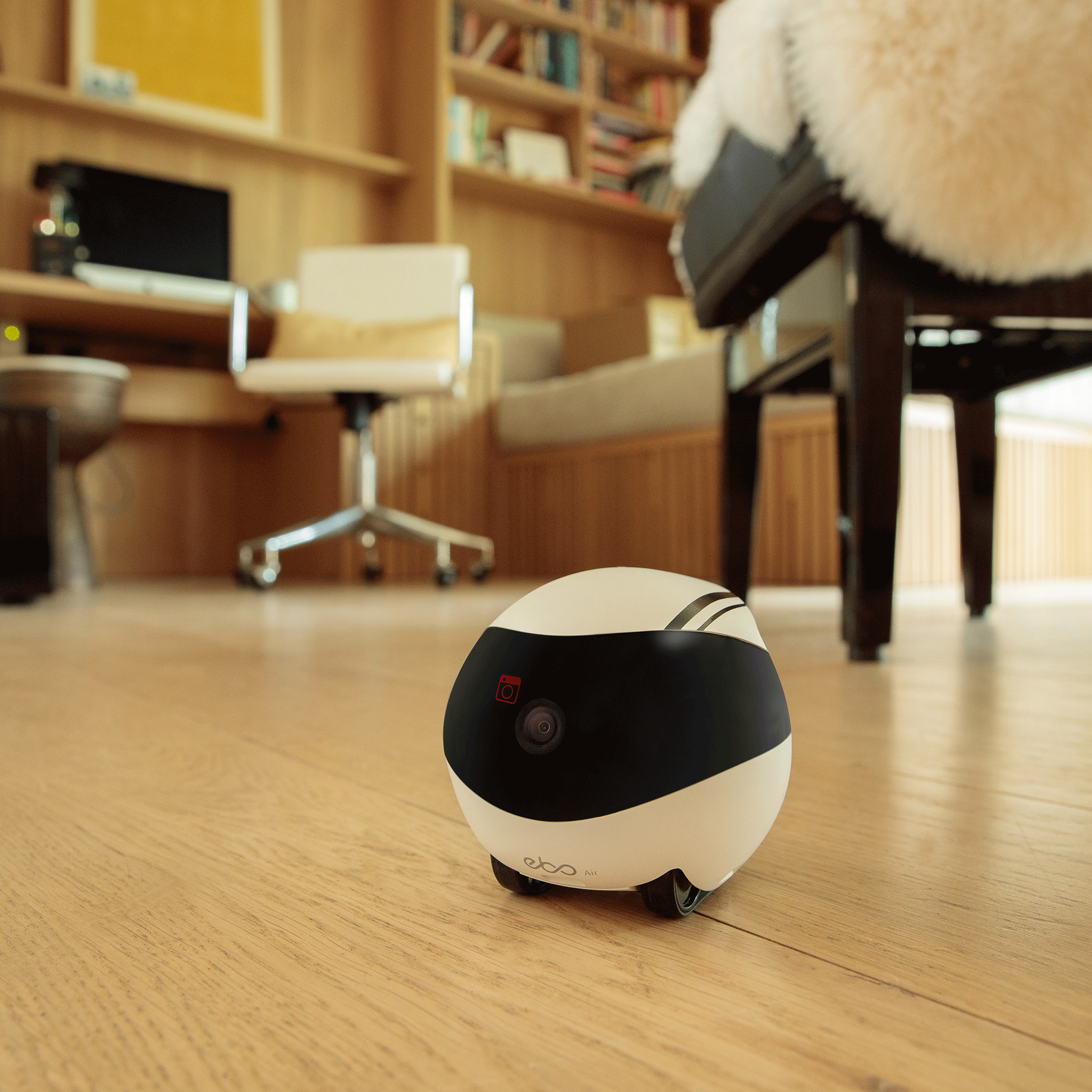
Smart robot cleaners have come a long way in just a few years. What started as rather expensive toys that bumped around your house sucking up dirt, now feature NASA levels of navigation software that can map out your home and even clean around your mess. Prices have fallen and quality has risen sharply, and if you have a pet that moults we can’t recommend them highly enough.
That said, we’re starting to see a wider range of robotic helpers at home. Multi-purpose cleaners like the Roborock S7 Pro Ultra now have the ability to vacuum, mop, wash and empty automatically. EBO Air is an autonomous, camera-packed security robot that guards your home when you’re not there, looking for problems and keeping tabs on the pets.
The garden isn't left out, either, thanks to robot mowers. 'By using accurate navigation, the robot can cover the lawn significantly more efficiently,' explains Amanda Kincaid, marketing manager for STIGA UK. 'This means less cutting time when compared to a random navigation robot.' Plus, they're simple to use. 'You can simply use the app to drive the robot mower around the perimeter of your lawn and any obstacles within it. You do it once and it remembers every detail.'
And while having your own robot butler might seem like a sci-fi fantasy, the reality is getting closer with gadgets like Temi who will follow you around being generally useful - face detection means it’s always where you need it - answering questions, showing content, managing smart home devices etc, and acting as a home security droid when you’re not there.
Robots are not essential members of the family just yet, but maybe that’s because we’re still expecting them to be like humans. In reality, gadgets such as the latest video doorbell, or connected lighting systems offer robotic levels of control already, just without the ‘robot’ personality.
7. Voice control
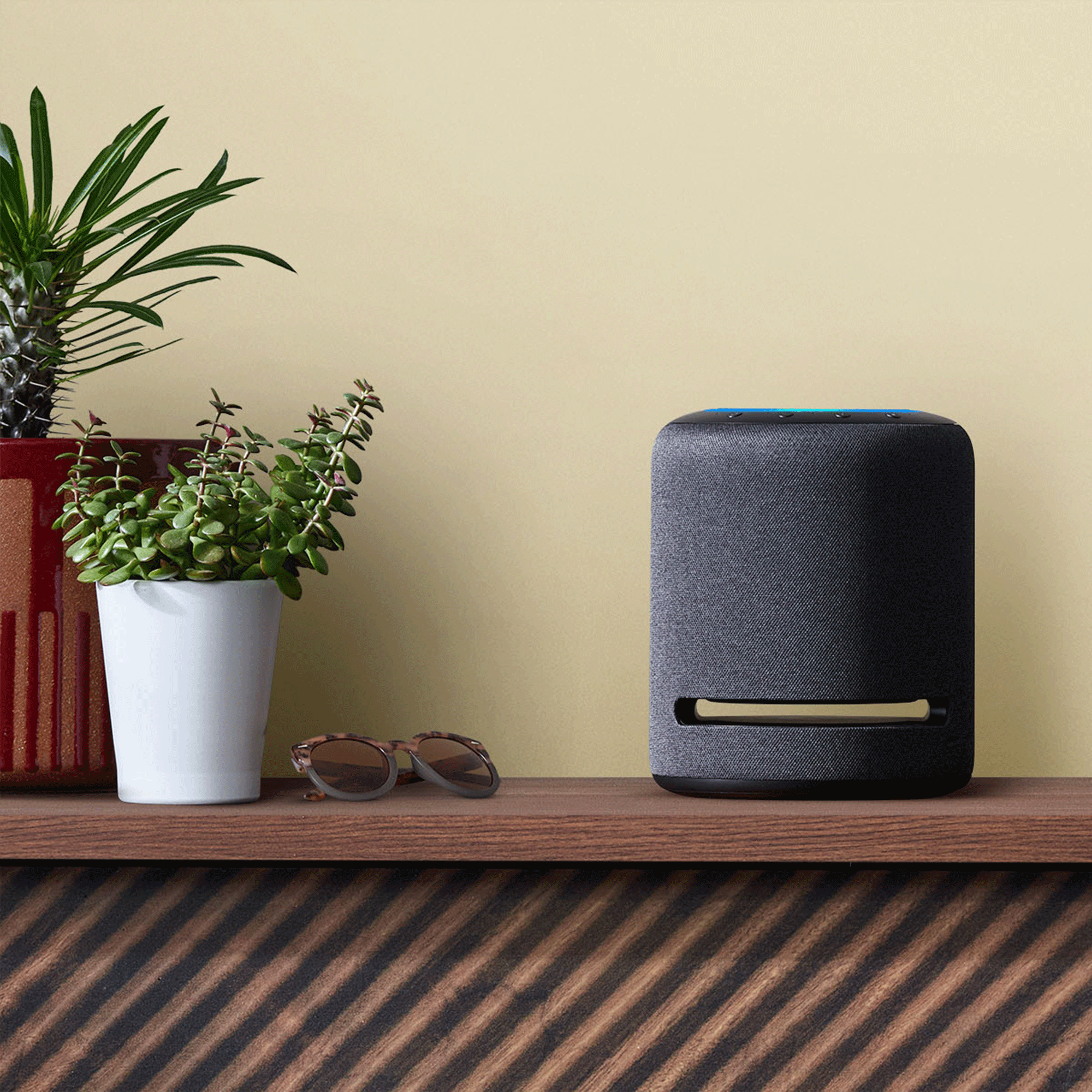
Smart speakers from Google Assistant, Amazon Alexa and Apple's Siri, have proven to be spectacularly popular, with 300 million devices sold globally. It’s easy to understand the appeal; they can stream music, answer homework questions, read the news, narrate books and be used to video call friends and family all without needing to reach for your smartphone.
The success of voice control means there’s now an increasing number of compatible products, from soundbars, laptops, TVs and even cars, with hardware built-in. This means you can buy better quality speakers for instance with the same smart functionality.
And it’s worth remembering that smart speakers such as the Echo Dot or Google Nest Audio also act as a bridge to other smart home kits, so if you need to close the curtains, check the video doorbell or dim the lights, all you need to do is ask.
8. Window treatments
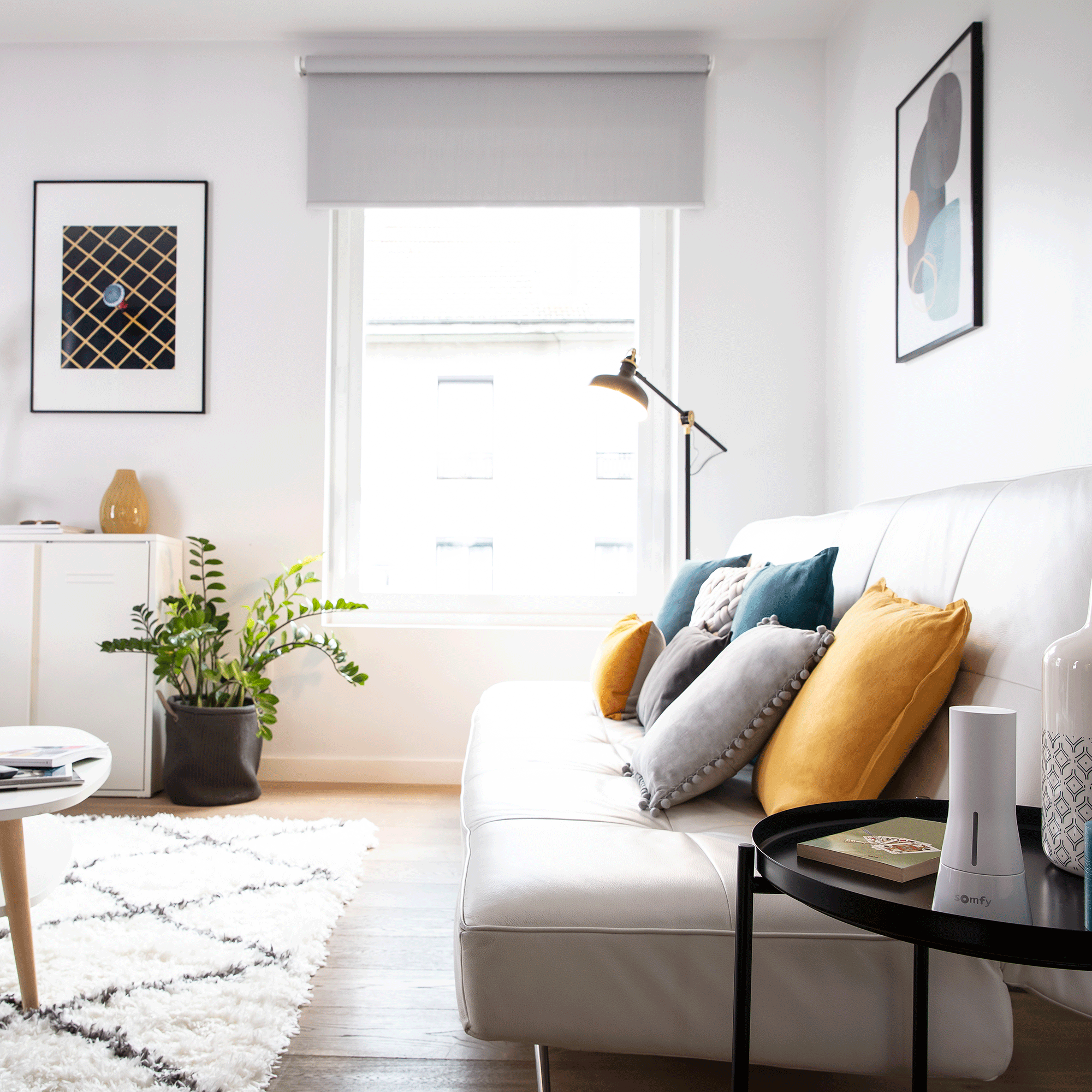
Luxury houses and hotels have boasted remote control curtains and blinds for years, but thanks to better battery technology and smart wireless control it’s now easier and cheaper to enjoy the luxury lifestyle at home.
SwitchBot has a range of plug-and-play gadgets to open and close curtains and blinds using your smartphone, and you can even set timers for dawn and dusk, which can improve sleep habits, and also enhance home security when you’re away.
'Electric blinds can also help with energy efficiency as they can be programmed to close when the sun disappears and temperatures start to drop, maximising heat retention,' says Lisa Cooper, Head of Product at Thomas Sanderson. 'And of course they’re perfect for hard-to-reach windows such as increasingly popular gable ends.'
9. Wellness
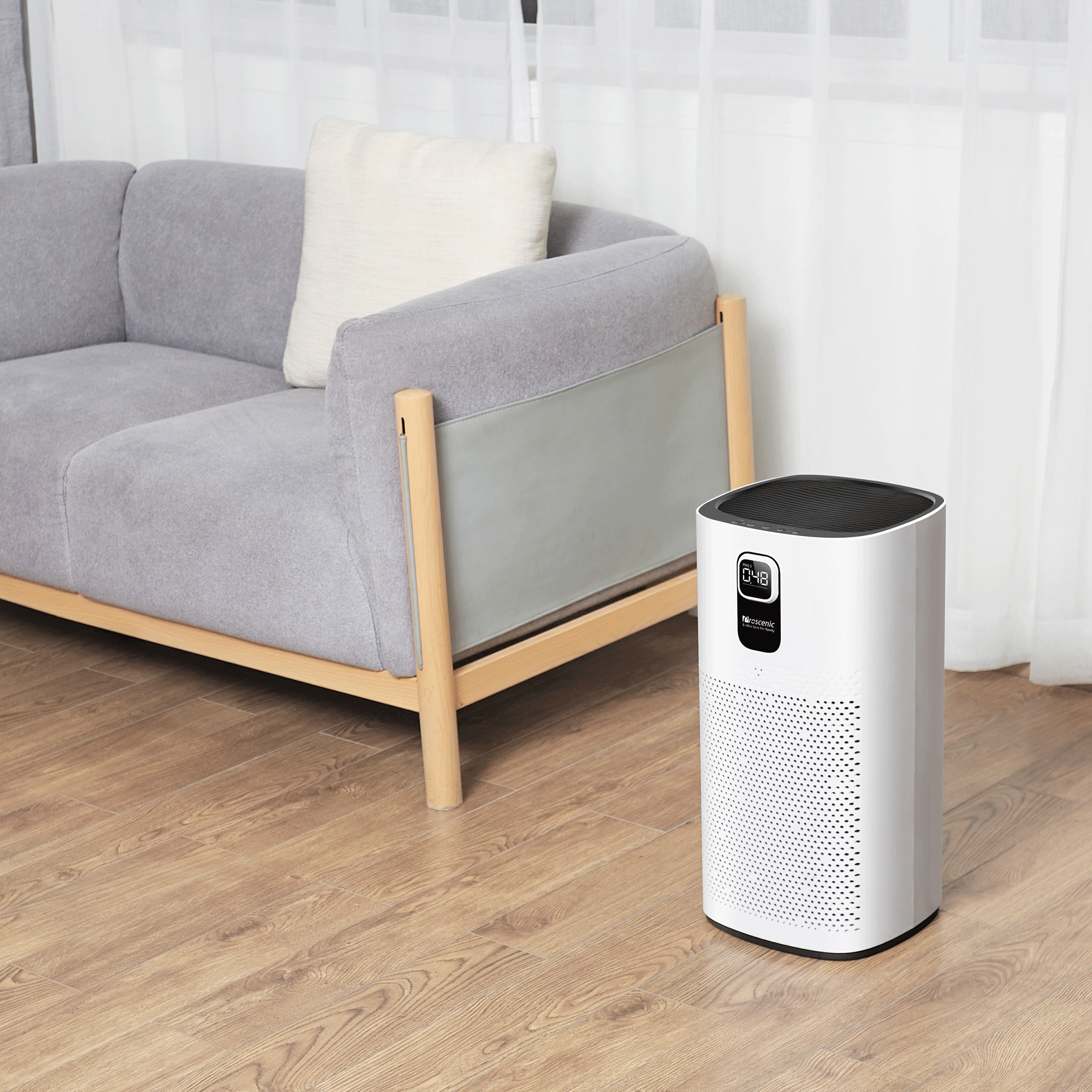
With the general population getting older, health tech is set to be big business in the next few years, with wellness gadgets helping keep our homes and bodies healthier. These include smart scales that track your body composition, at-home blood pressure monitors, posture-trackers and smart watches that track your heart rate and blood oxygen levels.
Air purification is one area where smart tech can help improve your health at home. The latest connected air purifiers detect levels of particulate matter in the air and adjust the power automatically. Allergy sufferers rejoice!
But wellness isn’t just a reaction to illness or fitness, it’s also about feeling good. Aqualisa has a range of connected showers with voice control that can be paired with lights, temperature and even music, to create a true spa experience at home.
10. Ecosytems
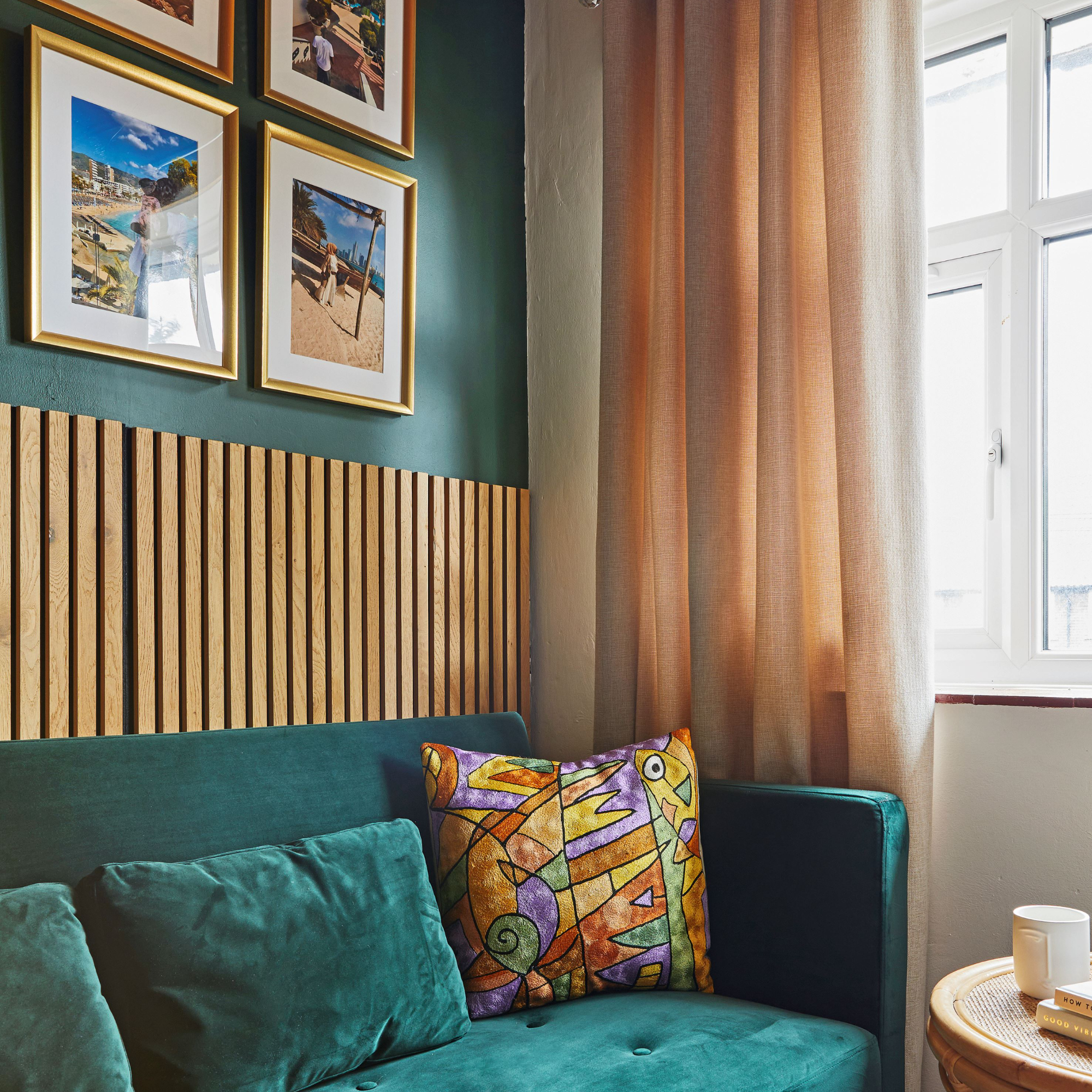
You may have heard the term 'ecosytems' in connection with smart homes, and that's because they're rising in popularity thanks to how much technology we've been adding to our houses, as it's essentially a term for integrating all these different pieces of tech together.
Matter is the on-going breakthrough for connectivity between brands. 'Matter is an ecosystem or platform for all products,' explains Wenger from Aqara. 'This can range from fully integrated smart home security systems, motion and presence sensors to protect a home and its residents, temperature and humidity sensors to maintain a healthy environment, smart lighting and even controllers to draw the curtains.'
'Customers are now used to installing different app for different brands of products but with Matter ecosystem a user's experience would be much better. Retrofitted products are the first step to improving our living experience easily and at a lower cost without the need to replace existing devices at home.'
Oddly there’s no dedicated website for Matter, but look for the logo to be sure your chosen product(s) will play nicely with others. Many existing products will also receive software updates to make them compatible.
11. Security
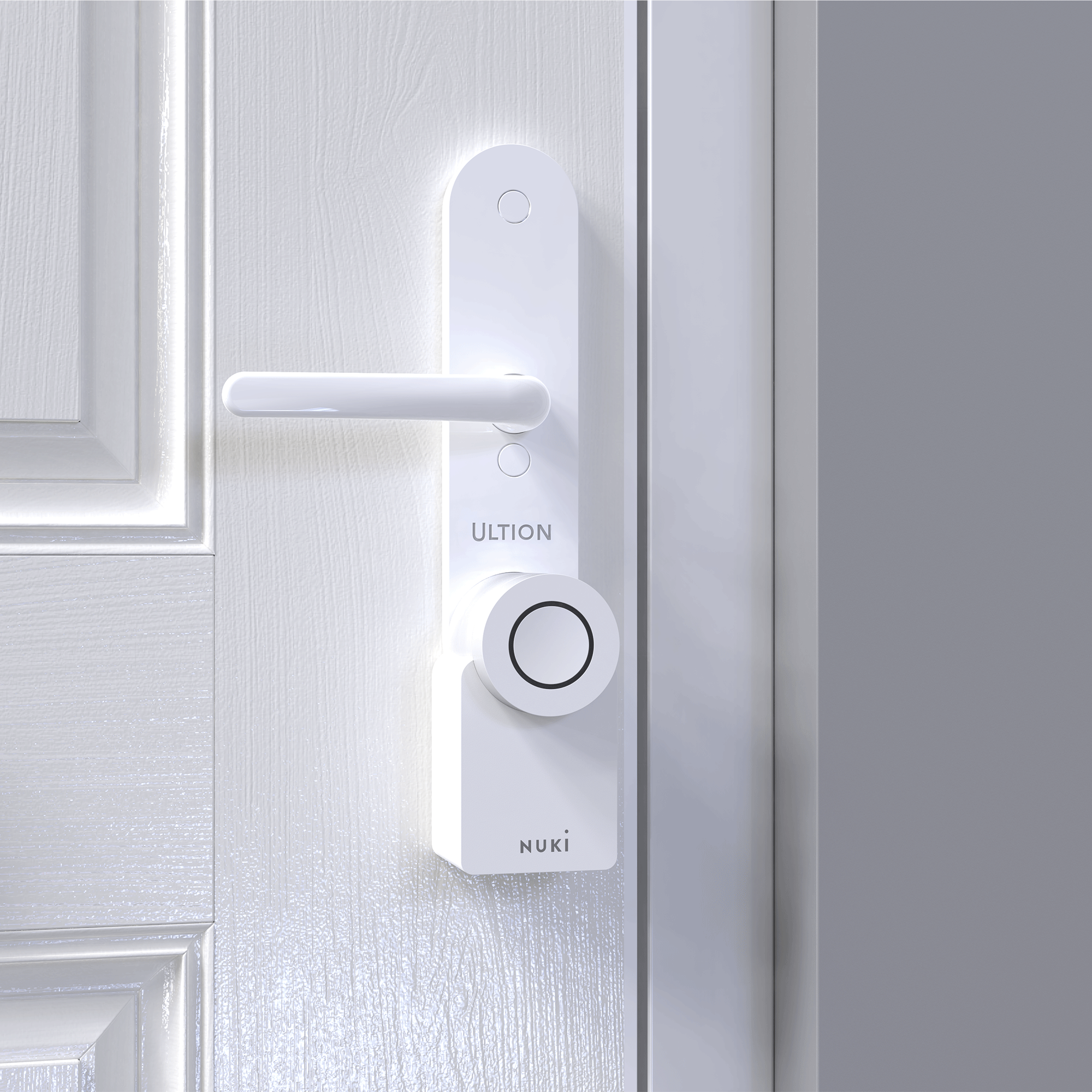
It wasn’t all that long ago that home security meant either having an expensive fitted alarm system or a big dog. Thankfully things have moved on since then and the best smart home security systems now consist of easily fitted alarms, sensors and cameras that can notify you of any activity at home or in the garden. The best video doorbells for instance can instantly notify you via smartphone when a visitor approaches the house, even if they don’t ring the bell, while also saving photos and video as possible evidence.
Keyless locks from brands such as Ultion from Brisant are also growing in popularity, letting you open the door with a smartphone app. A godsend to those who always forget keys, but also practical as you can remotely allow access to other people such as the dog walker or house sitter.
And while ‘smart’ security products have sometimes been seen as superficial rather than serious, some companies including Boundary now offer 24/7 call centre support, and can even alert the police.
Cybersecurity, too, should certainly not be overlooked. 'It is essential to put in place a cyber security system which will help users live their digital lives in a safe way,' adds Gary from NETGEAR.
12. Wi-Fi
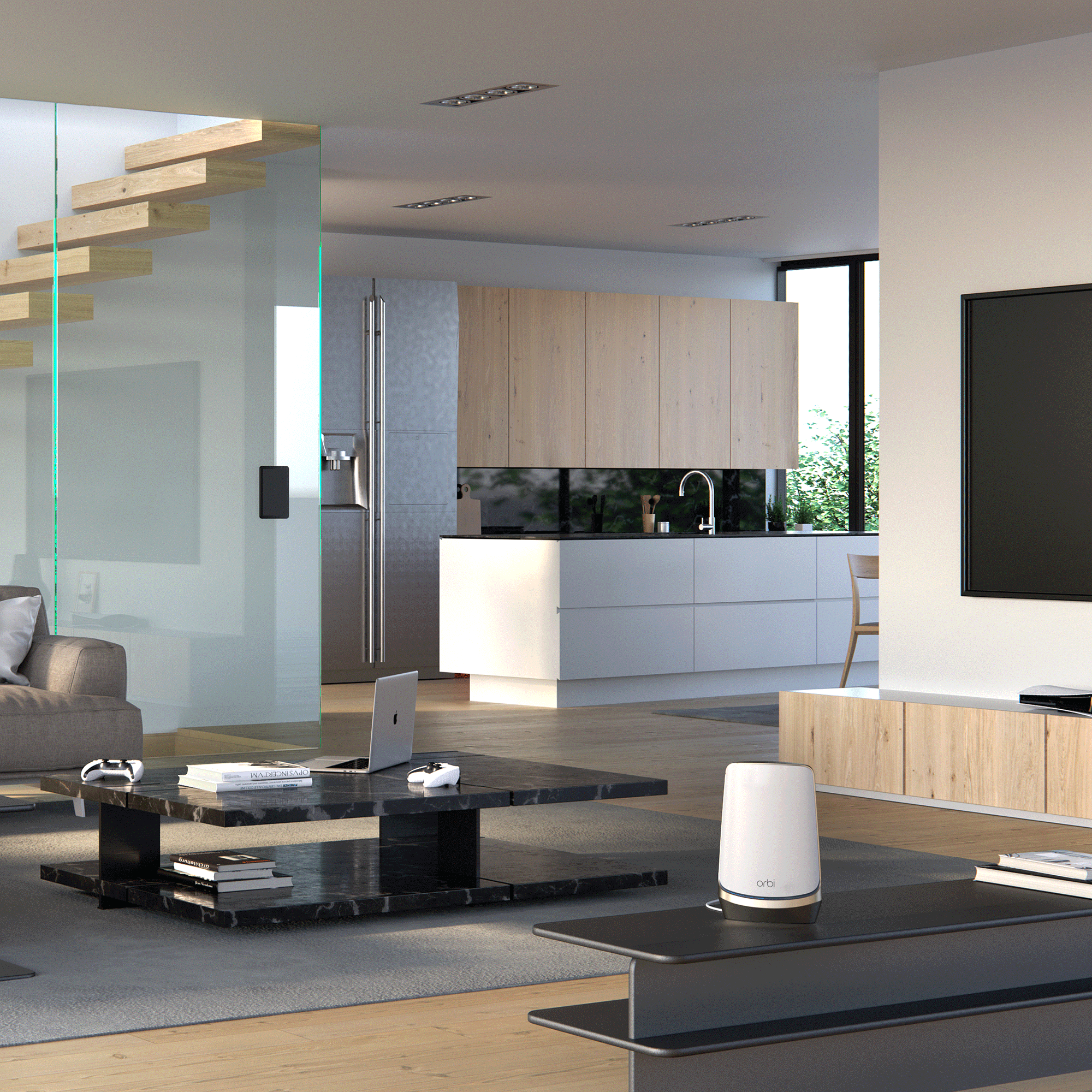
There’s nothing sexy about Wi-Fi routers, but without a strong, reliable connection across your entire home (and even garden) you won’t be able to get the best from your gadgets.
As crazy as it seems, most UK households own an average of 30 networked devices, with some smart homes even equipped with more than 60 devices connected to the internet. All these connected gadgets put pressure on your home network and there’s nothing more frustrating than having invested in app-controlled convenience if it doesn’t work when you need it to.
'Today, no one can stand being disconnected for more than a few minutes from the internet and it is with this requirement in mind that we’re building our solutions, connecting people with what matters,' agrees Gary from NETGEAR. 'In a world where more and more devices will be connected to the internet, not only demanding high bandwidth rates, but also all fighting for instant connectivity, the capacity to manage these devices simultaneously will be the key differentiator to ensure a seamless experience.'
Your internet service provider should be able to offer affordable Wi-Fi extenders to help boost the signal around your home - some like EE even guarantee you can connect up to 100 products without issue.
But if you have a large house full of constantly online streaming teenagers and want to ensure a strong signal throughout, investing in a mesh-style system such as the Orbi WiFi 6E could be the best solution, as it ensures maximum speeds for as many as 200 connected products.
FAQs
What is the best device for a smart home?
As we’ve mentioned, the most important part of any smart home is the Wi-Fi that connects it all together, so if you struggle to get full signal in the bedrooms, it might be time to invest in a router upgrade.
If you’re addicted to the convenience of online shopping, but hate missing deliveries, a video doorbell would be a great first smart gadget. You may not catch a burglar with one - hopefully, because nobody ever tries to break in - but you’ll be able to ask the courier to put your new shoes in a safe place.
But in truth, the easiest and most versatile piece of smart home technology is a speaker with a virtual assistant built in. Whether you choose something with Amazon’s Alexa, Google Assistant or Apple’s Siri compatible speakers, they’re great value, stream music but also offer an ever-growing list of features as well as the ability to control multiple smart home gadgets with only your voice.
What should I add to my smart home?
Assuming you’ve got some of the basics covered and are now looking to expand the scope of your smart home, it could now be worth investigating solar power and battery storage to help manage the spiralling energy costs.
With prices starting from £5,000, it’s a big initial investment, but according to Project Solar a 3kW (12 panel) system will generate around 3,400kWh of electricity per year, the equivalent to 97,000 hours of fridge, 5,000 hours of washing machine and 1417 hours of oven usage.
But there are many other ways to benefit from solar energy, for starters, Arl, Ring, Eufy and many other smart home security brands now sell affordable wall mounted solar panels to charge cameras, lights and sensors.
Battery storage is another great way to reduce energy costs, with brands including Anker selling large battery packs that can be charged up using portable solar panels, or during off-peak hours. Once full they can charge up a house full of phones, tablets, laptops and gadgets.
Does having a smart home add value?
According to research from Compare the Market, smart technology can boost the amount offered on a for-sale property by around £2,000, with 51 % of Brits willing to pay as much as £2,409 more for a property loaded with smart technology.
They’re relatively small amounts compared to the cost of a house, but a home with modern appliances and a good quality smart home security system will be more desirable, even a video doorbell can impress prospective buyers, even though they cost from just £100 to install anyway. Money-saving technology such as smart thermostats, renewable energy and LED lights could, given the current financial climate, also be seen as safe bets.
What’s next for smart homes?
If there has been one problem with smart home technology, it’s the fact that not all devices like talking to each other, so it can seem hard to create a smart home ecosystem without starting from scratch.
Matter aims to change that, by offering cross-party compatibility across many of the leading smart home brands. The result should mean Hue lighting, Samsung SmartThings, Ikea, Amazon, Google and Apple, to name but a few, will all work seamlessly together.
Matter launched late in 2022 with with over 190 compatible smart home devices, but this is set to increase hugely over the coming years, so hopefully, when shopping for security cameras, speakers or thermostats for instance, whatever you choose will work on your chosen platform, and even alongside previously competing brands.

Thea Babington-Stitt is the Assistant Editor for Ideal Home. Thea has been working across some of the UK’s leading interiors titles for nearly 10 years.
She started working on these magazines and websites after graduating from City University London with a Masters in Magazine Journalism. Before moving to Ideal Home, Thea was News and Features Editor at Homes & Gardens, LivingEtc and Country Homes & Interiors.